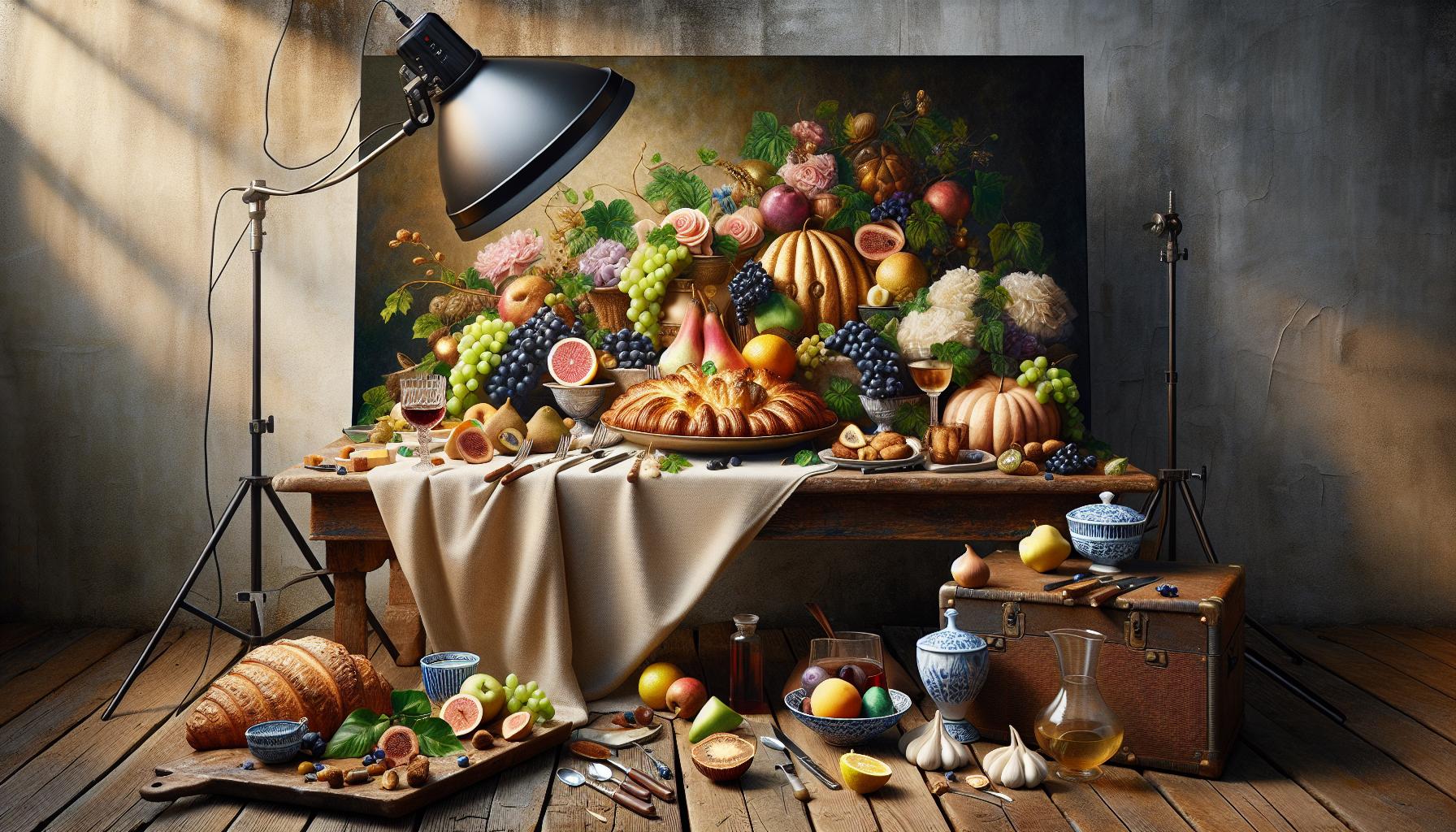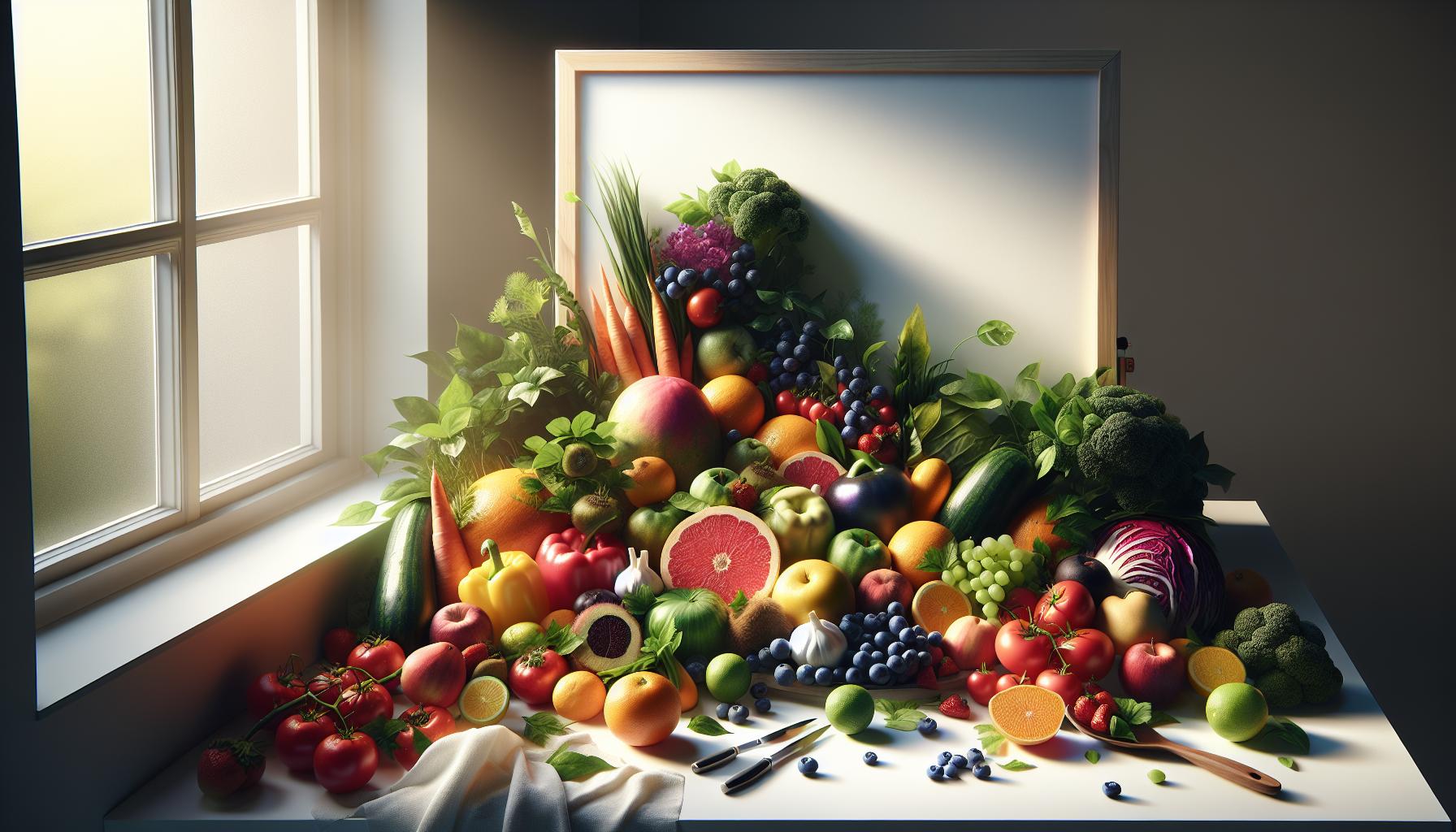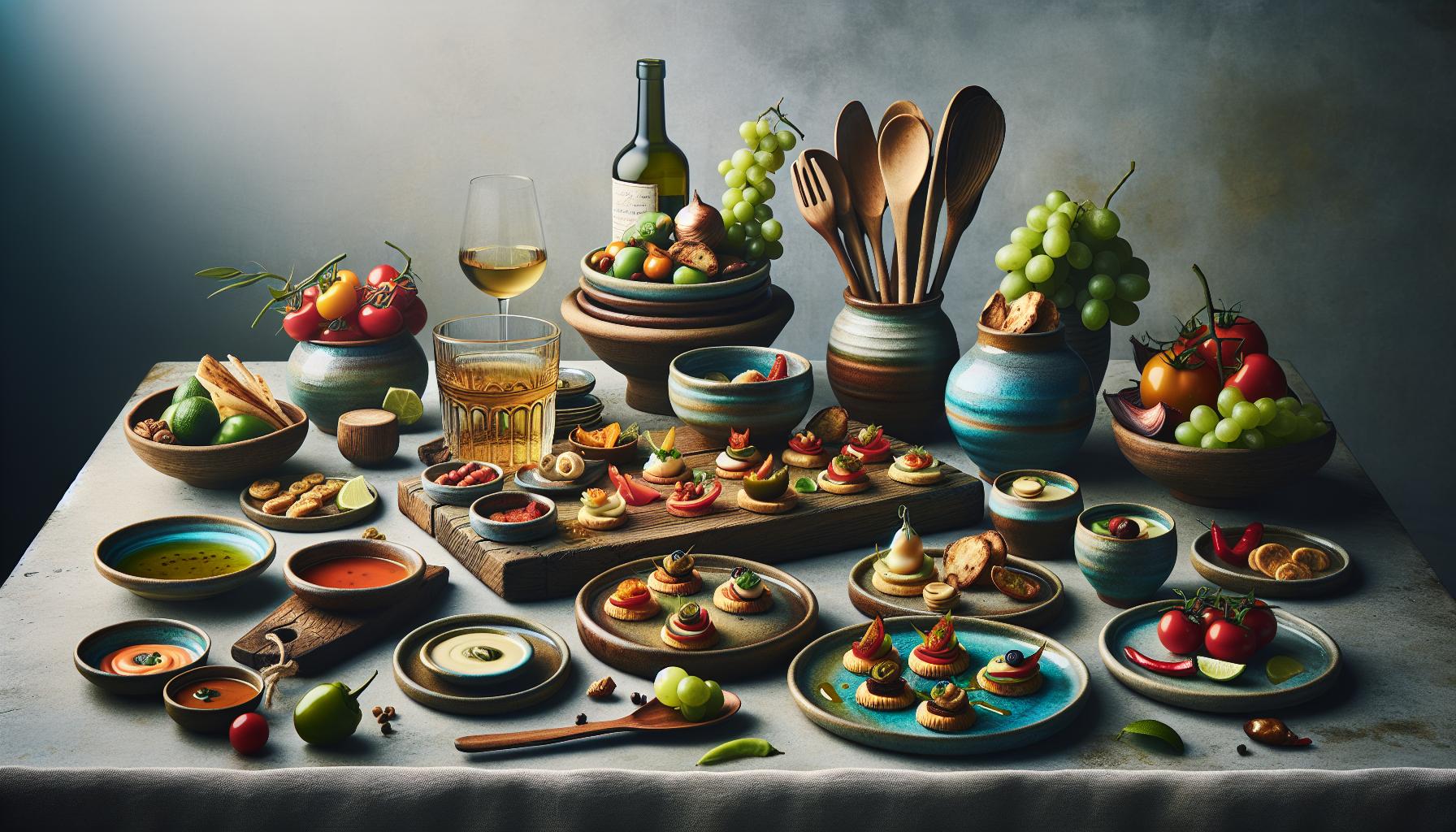Food photography transforms ordinary meals into mouthwatering masterpieces that make viewers’ stomachs growl. While it might look effortless on Instagram feeds and magazine covers, still life food photography requires more than just pointing a camera at a plate and clicking away.
Behind every stunning food photograph lies careful planning, precise lighting techniques and thoughtful composition. From perfectly placed crumbs to strategically melting ice cream, photographers orchestrate each element to create images that tell delicious stories. It’s an art form that combines the technical aspects of photography with the styling finesse of culinary presentation – and sometimes a few tricks that wouldn’t fly in a real kitchen (motor oil as maple syrup, anyone?).
Still Life Photography Food
Still life photography food captures deliberately arranged food items in a controlled setting through carefully composed images. This specialized genre combines classical still life art principles with modern photography techniques to create compelling visual stories about food.
Professional food photographers arrange their subjects with specific elements:
- Composition elements include plates, utensils, linens, garnishes
- Environmental props like vintage cookware, rustic tables, textured backgrounds
- Supporting ingredients that complement the main dish
- Decorative elements such as fresh herbs, spices, flowers
The photographic approach focuses on several key components:
- Controlled lighting setups with diffusers softboxes
- Strategic camera angles from 45-degrees overhead 90-degree top-down
- Selective focus techniques to highlight texture detail
- Color harmony between the food props background elements
Unlike casual food photos, still life photography food employs specific technical considerations:
- Studio-grade lighting equipment to eliminate unwanted shadows
- Professional-level cameras with macro lens capabilities
- Tethered shooting for immediate image review adjustment
- Post-processing software for color correction enhancement
Commercial applications include:
- Restaurant menu photography
- Cookbook editorial spreads
- Food packaging imagery
- Marketing advertising campaigns
A successful still life photography food creates visual interest through precise arrangement lighting composition while maintaining the natural appeal authenticity of the featured dishes. The photographer controls every aspect of the image from food styling to final editing creating an artistic representation that communicates the essence of the culinary subject.
Essential Equipment for Food Still Life

Professional still life photography food demands specialized equipment to capture intricate details textures of culinary subjects. Each piece of equipment serves a specific purpose in creating stunning visual compositions.
Camera and Lens Selection
A full-frame DSLR or mirrorless camera captures fine details in food photography with exceptional clarity. The Canon 5D Mark IV or Sony A7R IV deliver outstanding image quality with their high-resolution sensors. A macro lens (90-105mm) enables close-up shots of food textures while maintaining proper perspective. Prime lenses with wide apertures (f/1.4-f/2.8) create selective focus effects that draw attention to specific elements. Tilt-shift lenses provide precise control over the plane of focus especially useful for flat-lay compositions.
Lighting Equipment
Studio strobes or continuous LED lights form the backbone of professional food lighting setups. Key lighting equipment includes:
- 2-3 studio strobe lights (400-600W) with softboxes
- LED panels with adjustable color temperature (3200K-5600K)
- Light modifiers: diffusion panels scrims reflectors
- Light stands with boom arms for overhead positioning
- Flash triggers radio receivers for strobe synchronization
- Textured surfaces: marble slate wood ceramic tiles
- Fabric backdrops: linen cotton velvet with matte finishes
- Tableware: ceramic plates bowls glasses in neutral colors
- Styling tools: tweezers pipettes spray bottles
- Vintage cutlery: forks spoons knives with patina
- Food-specific props: cutting boards cake stands serving platters
Mastering Lighting Techniques

Lighting creates the mood and atmosphere in still life photography food. Strategic light placement enhances textures, colors and shapes while minimizing unwanted shadows and reflections.
Natural Light Setup
Natural light flows through windows to create soft, appealing food photographs. Positioning food 3-4 feet from a north-facing window provides consistent indirect lighting throughout the day. Diffusion screens placed between the window and subject soften harsh shadows on bright days. A white foam board or reflector placed opposite the window fills in dark areas by bouncing light back onto the subject. Moving the setup closer to or farther from the window controls light intensity. Shooting during golden hour (1 hour after sunrise or before sunset) adds warm, dimensional lighting.
Artificial Light Positioning
Studio lights offer complete control over food photography lighting conditions. A main light positioned 45 degrees to the side at subject height creates dimension while maintaining natural shadows. Diffusion panels soften the light source to prevent harsh reflections on shiny surfaces like plates or sauces. Fill lights at 25% power illuminate shadow areas without eliminating depth. Strip lights behind clear glasses or bottles create attractive highlights. Grid spots concentrate light on specific food details like texture or garnishes. LED panels provide continuous lighting that simplifies exposure settings during long shoots.
Composition Guidelines

Effective composition transforms ordinary food photographs into captivating visual stories. The strategic placement of elements creates balance while guiding viewers’ attention through the frame.
Rule of Thirds
The rule of thirds divides the frame into nine equal sections using two horizontal and two vertical lines. Placing key food elements along these lines or at their intersections creates visual interest and balance. Professional photographers position the main dish at the lower right intersection point to match natural eye movement patterns. Secondary ingredients or garnishes occupy the remaining intersection points to establish visual flow. This composition technique works particularly well with asymmetrical arrangements of small plates tapas or deconstructed dishes.
Creating Depth and Texture
Layering multiple elements at varying heights adds three-dimensional depth to food photographs. Stacking plates props or ingredients creates foreground middle ground and background zones. Textural contrast emerges through combining smooth surfaces like glazed ceramics with rough elements such as burlap or wooden boards. Strategic focus placement emphasizes specific textures while letting others fade into soft blur. Photographers incorporate complementary textures through garnishes crumbs or drizzles to enhance visual interest. Angling dishes at 45 degrees generates natural shadows that highlight surface details.
Food Styling Tips
Food styling transforms ordinary ingredients into camera-ready subjects through specific preparation techniques that enhance visual appeal. Professional food stylists employ specialized methods to maintain freshness while creating compelling compositions.
Preparing Food for the Camera
Food preparation for photography differs from standard cooking methods. Raw vegetables maintain vibrant colors when blanched for 30 seconds in boiling water then immediately plunged into ice water. Proteins like meat appear juicier with a light coating of glycerin or oil. Pasta dishes stay fresh-looking when cooked 1-2 minutes less than normal then tossed with olive oil. Cold items such as ice cream use substitutes like mashed potatoes mixed with food coloring to prevent melting under hot lights. Fresh herbs get revived in ice water for 10 minutes before placement. Sauces receive strategic thickening with cornstarch to prevent running. Multiple portions of each dish allow for quick replacements during extended photo sessions.
Working with Garnishes
Garnishes add color contrast texture depth to food photographs. Fresh microgreens provide delicate visual elements when placed individually with tweezers. Edible flowers like nasturtiums pansies create focal points through strategic placement. Citrus segments maintain brightness when brushed with mineral oil. Fresh herbs work best when selected sorted by size shape before use. Spices oils get applied with precision droppers eyedroppers for controlled placement. Chopped ingredients appear fresher when cut immediately before shooting. Textural elements like seeds nuts receive selective placement to create natural-looking scatter patterns. Color-coordinated garnishes complement the main dish while adding visual interest to negative space.
Post-Processing Workflow
Post-processing transforms raw food photographs into polished, professional images through strategic adjustments in editing software like Adobe Lightroom or Capture One.
Color Grading
Color grading in food photography focuses on enhancing the natural colors of ingredients while maintaining authenticity. Adjusting white balance creates accurate food tones by removing unwanted color casts. Selective color adjustments target specific food elements: increasing saturation for fresh produce enhances vibrancy, while desaturating backgrounds draws attention to the main subject. HSL (Hue, Saturation, Luminance) adjustments fine-tune individual colors: boosting oranges makes golden crusts more appetizing, enhancing greens makes vegetables appear fresher. Split toning adds warmth to highlights or coolness to shadows, creating mood depth in the final image.
Enhancing Details
Detail enhancement brings out food textures through targeted clarity adjustments. Sharpening accentuates the crispy edges of bread crusts, crystalline sugar surfaces or meat grill marks. Texture sliders emphasize grain patterns in wooden surfaces or fabric weaves. Dehaze tools cut through flat lighting to reveal depth in soups or sauces. Local adjustments with adjustment brushes or radial filters highlight specific areas: brightening garnishes, deepening shadows under plates or enhancing steam effects. Noise reduction smooths out high ISO grain while preserving essential detail in darker image areas.
Brings Food Photography to Life
Still life food photography represents a perfect blend of technical expertise artistic vision and culinary artistry. From selecting the right equipment to mastering lighting techniques and perfecting post-processing workflows photographers can transform ordinary dishes into extraordinary visual stories.
Success in this field requires dedication to learning proper techniques investing in quality equipment and developing a keen eye for detail. Whether creating content for commercial clients or pursuing artistic expression still life food photography continues to evolve as a specialized craft that captures the beauty and appeal of culinary creations.
The combination of careful staging thoughtful composition and skilled editing brings food photography to life making viewers not just see but experience the essence of each carefully crafted image.

